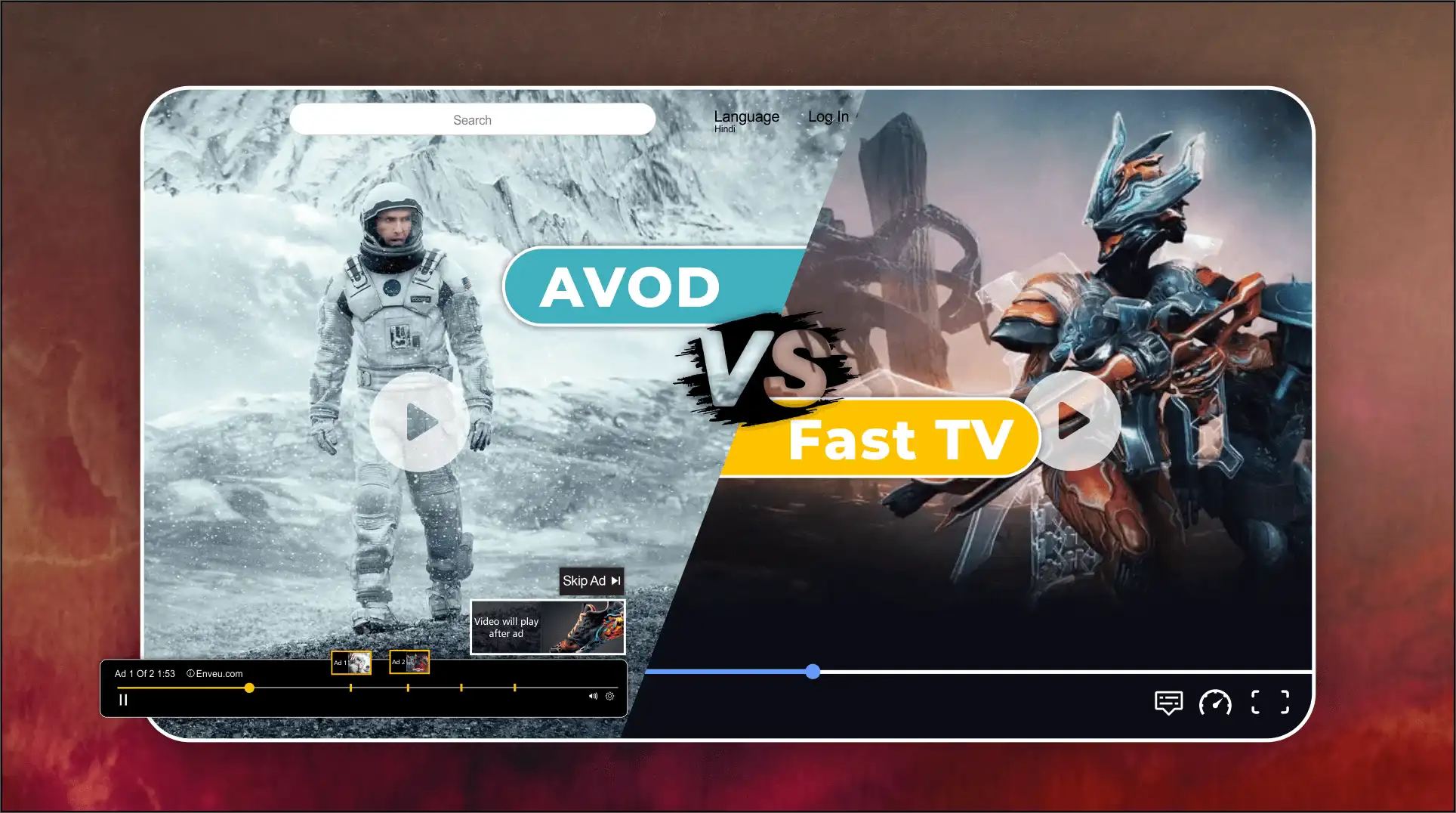FAST vs AVOD: Decoding the Best Streaming Choice
Dive into the world of streaming with FAST vs AVOD. Learn which one suits your preferences and enjoy seamless entertainment.

The Free Ad-Supported Streaming Technology, often known as FAST, represents a paradigm shift in the manner in which viewers take in digital information. Users are able to access a wide variety of movies, television series, and other types of video content through a unique streaming approach that does not require them to pay a membership fee.
Viewers are able to watch their preferred content without having to pay to do so, as this is made possible by advertising that has been put in appropriate locations. FAST platforms have quickly acquired popularity by providing users with access to a wide variety of material as well as tailored advertising experiences, thereby transforming the landscape of digital entertainment in the process.
In this day and age of on-demand streaming, the FAST technology provides a solution that is both easily accessible and affordable for individuals who are looking for high-quality entertainment without breaking the budget. Let’s get started on our journey to discover the exciting world of streaming with FAST vs AVOD!
Table of Contents
ToggleUnderstanding Free Ad-Supported Streaming Technology (FAST)
FAST (Free Ad-Supported Streaming TV) refers to subscription-free digital channels that stream ad-supported content via Connected TV devices.
FAST channels play programmes on a predetermined schedule with ad breaks. FAST replicates the linear viewing experience of traditional television; but, because it is supplied over IP networks and is based on a one-to-one distribution strategy, advertisers can employ Addressable TV solutions to serve adverts tailored to specific viewers. Many FAST channels are dedicated to a single topic, such as autos, entertainment, health, science, or food.
FAST channels, unlike traditional broadcasting techniques such as antenna, cable, or satellite, are available from any internet-connected device, including smart TVs and linked TVs. The result is an immersive watching experience that is similar to traditional cable TV but with the added benefits of modern streaming technologies.
Although both FAST and Ad-Supported Video on Demand (AVOD) are free ad-supported streaming services supplied via connected TV devices (not set-top boxes), FAST is delivered on a pre-set schedule, whilst AVOD is delivered on-demand based on the viewer’s choosing.
Analysing AVOD
AVOD services are quickly becoming a viable alternative to traditional pay-TV services, thanks to the advent of connected television. The continual rise of the Ott market has also fueled the popularity of AVOD services among users. So, what exactly is AVOD? Why is it so popular among streaming companies and consumers? Let’s get started to learn more about this unique method of information consumption!
AVOD, or Advertising-based Video On Demand, is a video streaming paradigm in which the user receives free material in exchange for advertising money. Users can access the content without a subscription charge, but they must watch advertisements before, during, and after the film. AVOD is a popular video monetization approach for streaming services since it allows a larger audience to watch content while still making cash through advertising.
AVOD vs FAST: What to choose?
Is it a FAST channel or an AVOD channel? It’s difficult to tell the difference between the two, but here’s an easy way to think about it.
Viewers get on-demand content in both models by watching advertisements. FAST is distinct from AVOD services in that it offers linear, scheduled programmes. This is a significant benefit for many viewers who still value cable television’s “always on” experience.
Another significant distinction between the two is pricing: FAST services are always free, with adverts serving as their principal source of revenue. In contrast, AVOD services may be free or demand a subscription.
Netflix, for example, now provides an ad-supported subscription plan that is less expensive than their traditional subscription video-on-demand (SVOD) plan. The same is true for popular streaming TV services such as Disney+ and HBO Max’s AVOD subscriptions or tiers.
Still perplexed? That’s OK. Remember how we stated the distinction between models is becoming increasingly blurred? The grey region between FAST and SVOD services is AVOD. A fee-based AVOD business is technically an SVOD, but free AVODs can potentially be classified as FAST services. Because AVOD has become increasingly ambiguous, the word is gradually losing favour.
Conclusion
The choice between FAST vs AVOD ultimately depends on your content preferences and viewing habits. If you are predominantly interested in audio content and do not mind advertisements, AVOD may be your preference. If, on the other hand, you desire a wider variety of audio and video content, FAST platforms may be a superior fit. In the end, the “better” option is subjective and dependent on your particular entertainment requirements.